PROTECT YOUR DNA WITH QUANTUM TECHNOLOGY
Orgo-Life the new way to the future Advertising by AdpathwayThe throes of late summer expose the garden to conditions like high heat, prolonged dry spells, or inundating rain. The end-of-season swings take a toll on even the most durable performers, who have spent a season actively growing and producing. For many, growth and flowering slow now until a fresh flush appears with fall’s moderate weather.
To revive a dry garden, fill it with plants that can withstand the heat and provide a stunning fall display. Flowering perennials that shine in summer and fall steal the show and brighten tired beds or container arrangements. Sowing cool-season annuals and vegetables in August and September brings a fresh bounty as the season transitions.
With adaptable, easy-going, and fast-growing selections, the summer-worn garden gets a lift. Selections added now need regular moisture as they establish under challenging conditions, so prepare to water through frost in dry situations. Enjoy a late-season show with annuals and perennials (which only get better next year).

Zeolights Calendula Seeds
Sunspot Dwarf Sunflower

Sunspot Dwarf Sunflower Seeds

Got the Blues Pansy Seeds
Aster
 Fills late-summer gaps with purple-blue blooms.
Fills late-summer gaps with purple-blue blooms.Asters are the stars of the fall garden with a blanket of purple-blue ray blooms above mounding foliage. They fill garden gaps for a spray of color in the late-season display. While August brings challenges in dry gardens, we can look forward to some blooms this season and even more next summer and fall.
Many asters are native to North America and flower as many other perennials begin to fade. A pollinator favorite, they support bees, butterflies, and others in the seasonal transition. They’re also a lovely addition to fall planting schemes and floral arrangements.
Asters prefer organically rich soils, and new plantings do best with consistent moisture. To prevent diseases like powdery mildew, provide ample air circulation with proper spacing, and ensure soils have good drainage.
Rose Mallow
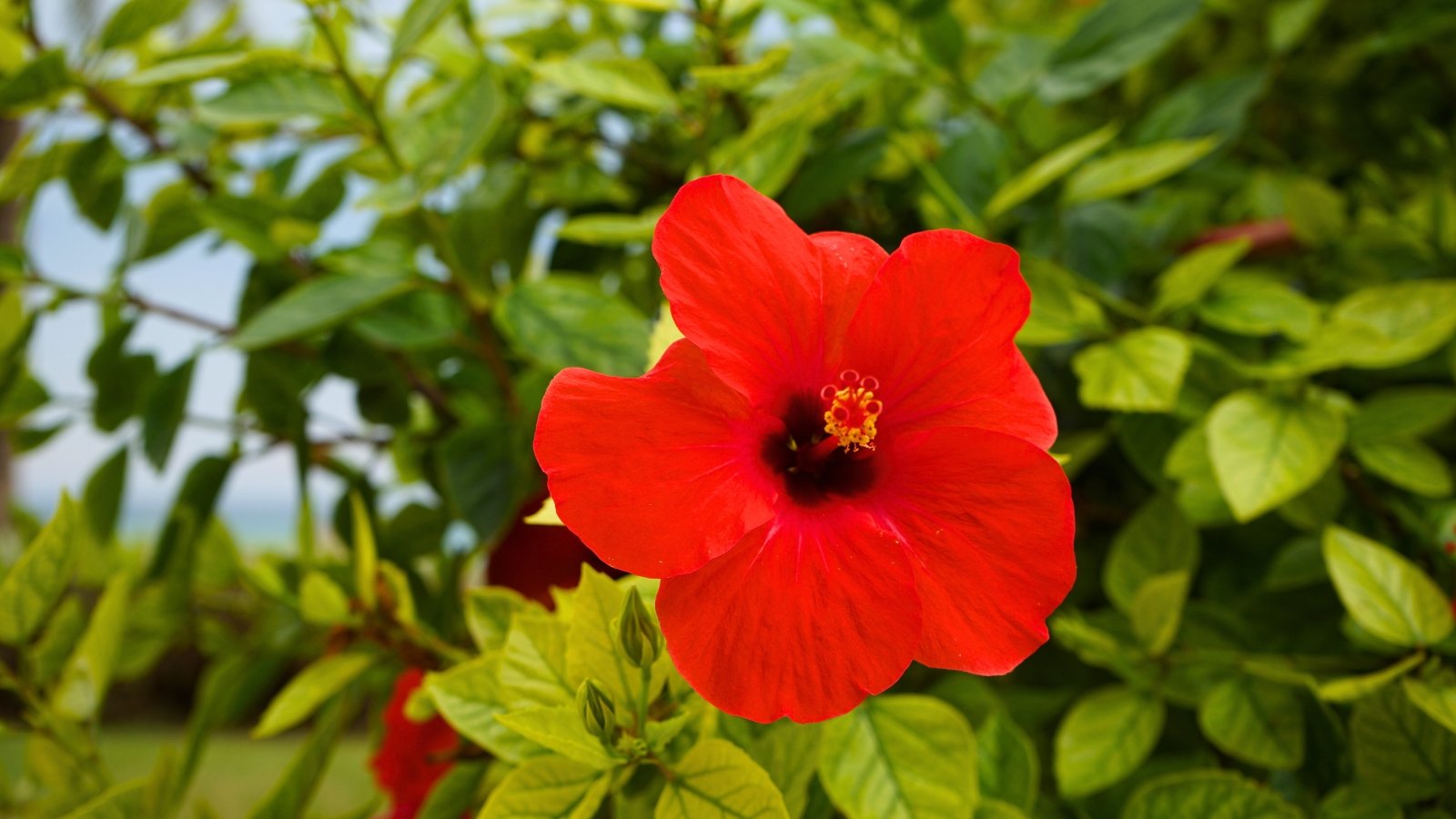 Needs steady moisture for nonstop giant blooms.
Needs steady moisture for nonstop giant blooms.Rose mallow, or hardy hibiscus, needs regular moisture in late summer, but it enlivens the tired, dry garden with huge disc blooms and dynamic foliage. Whether a North American native mallow like H. moscheutos, H. laevis, and H. coccineus, or a hardy hybrid, they boast a durable performance and standout blooms through fall.
Buds emerge in early summer and open successively until temperatures drop. From white to blush pink to deep scarlet, they’re eye-catching from near or far. In addition to the striking saucer blooms are deeply lobed, palmate leaves in shades from green to plum to chocolate.
Rose mallow tolerates different soil types but needs consistent, evenly moist soil. They won’t withstand prolonged dry spells. At planting, add a layer of mulch to regulate soil temperatures and retain moisture. Topdress with more for winter protection; the native mallows may withstand zone 5 temperatures with good insulation. Don’t cut dormant stems back in the fall for additional protection.
Russian Sage
 Handles heat and drought with blooms until frost.
Handles heat and drought with blooms until frost.Russian sage is a sun-loving perennial that shines with silvery leaves and sprays of blue-purple tubular blooms. The extended bloom show lasts until frost. The fuzzy, aromatic foliage lends a fine texture and bright contrast among leafy greens or dark foliage selections.
Russian sage thrives in hot, dry gardens and flowers reliably across varying climates. Because of its performance and attributes, Salvia yangii received the Perennial Plant Association’s Perennial Plant of the Year award.
In high humidity or areas with heavy seasonal rains, disease-resistant varieties show the best performance. ‘Denim in Lace’ and ‘Crazy Blue’ are good options to defend against problems. ‘Blue Spires’ is a compact variety with dense blooms and Royal Horticultural Society Award of Garden Merit status. Provide well-draining soils for these drought-tolerant perennials.
Sunflowers
 Fast-growing from seed with blooms into fall.
Fast-growing from seed with blooms into fall.Sunflowers produce their huge blooms throughout summer and into fall. Sunflowers grow quickly from seed in various sizes and colors. For a quick turnaround in a dry garden, look for fast-maturing varieties, especially dwarf ones, for early fall infill. Grow them in the ground or containers for a vibrant show.
To gauge seed-sowing, plan around your area’s anticipated first frost date. Counting the days to maturity ensures time for growing and flowering before a heavy frost. Perennial sunflowers, too, provide color into fall and each summer after.
‘Sunspot’ matures in about 60 days with massive 10-inch flowerheads on small plants. ‘Teddy Bear’, with fuzzy yellow petals, has compact, multi-branched stems for lots of the gold blooms. ‘Teddy Bera’ germinates in about ten days, with 65 days to maturity.
Mexican Bush Sage
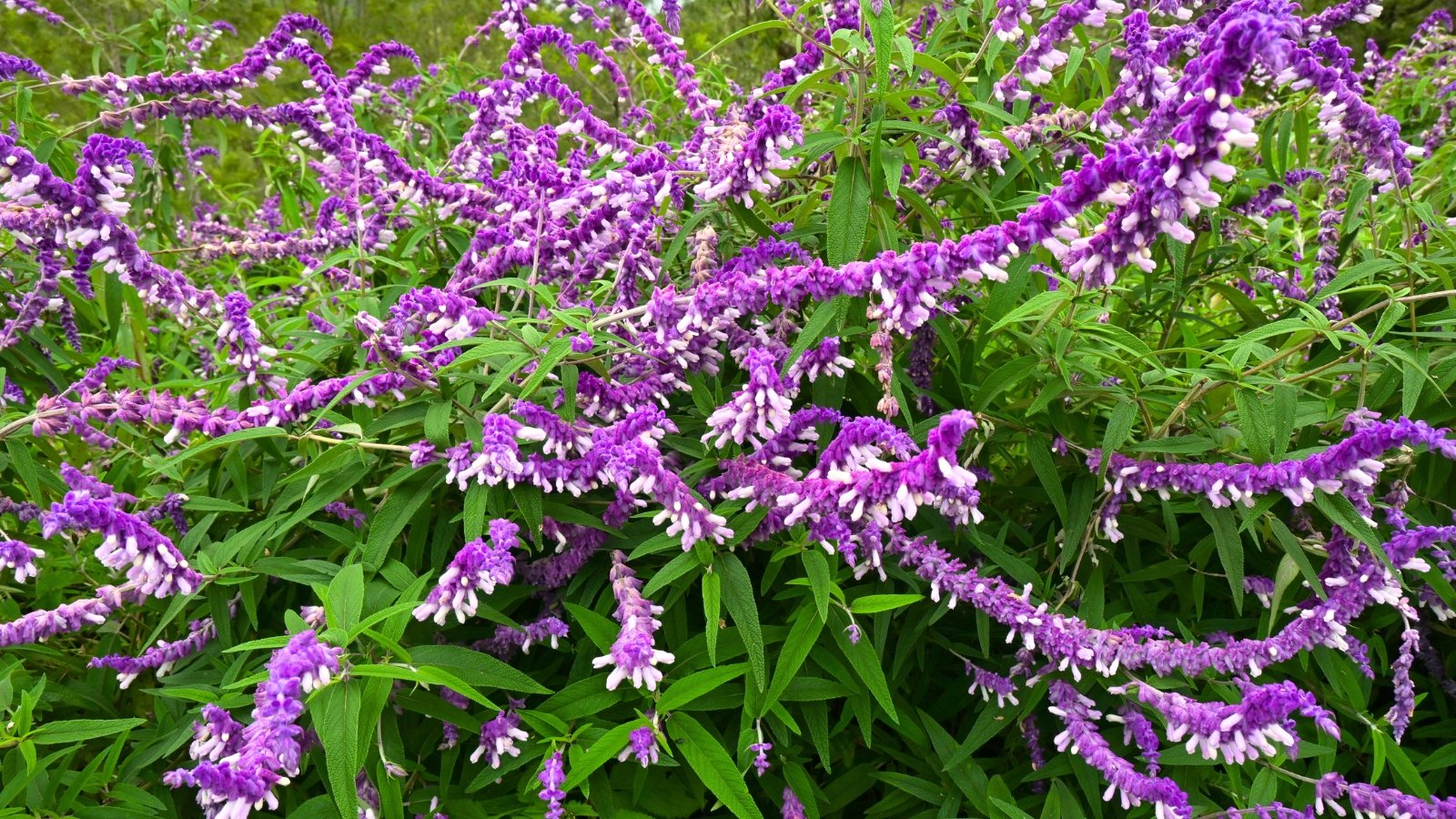 Velvety purple spikes attract pollinators through fall.
Velvety purple spikes attract pollinators through fall.Salvia of all sorts is a showy addition to the dry garden. They tolerate hot and dry situations and bring late-season flowers. Depending on the species, tubular blooms in bright red (S. coccinea, S. elegans) or cobalt blue (S. guaranitica) light up the border through fall and beckon pollinators in the process.
A particular late-summer standout in warm climates is Mexican bush sage, which flourishes in high heat. This salvia has velvety purple and white blooms that open in late summer through fall. The pollinator favorites line long spikes among silvery gray foliage.
Mexican bush sage has dense blooms with cultivars in purple, pink, and white. They include ‘Danielle’s Dream’ with pink flowers and ‘All Purple’ with royal purple blooms. ‘Santa Barbara’ has a compact habit and is a fit for smaller spaces.
Salvia leucantha is drought-tolerant once established, perfect for dry gardens. Provide water as roots settle in if planting in the dry garden for resiliency in the following seasons.
Chrysanthemum
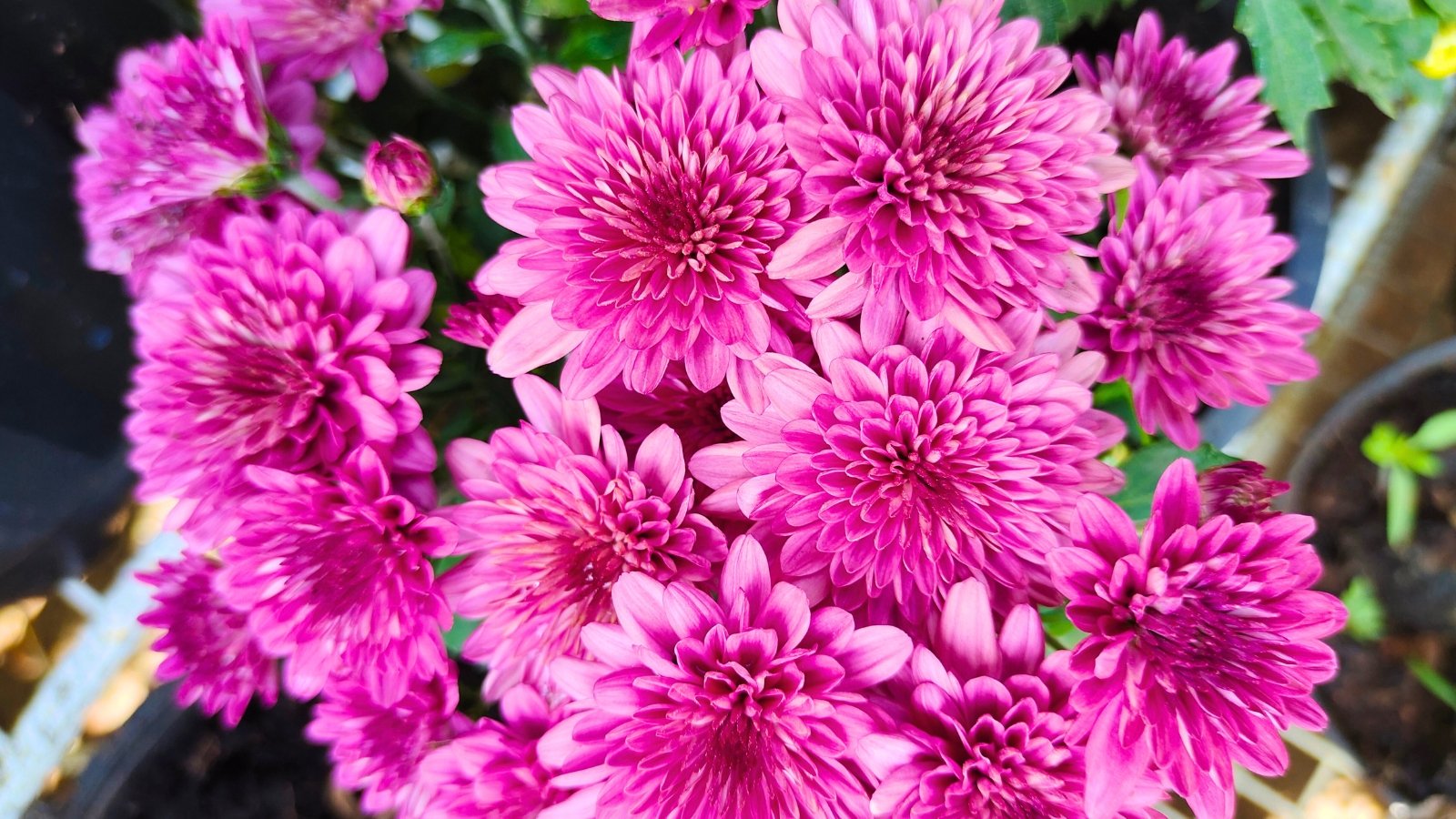 Adds rich fall color from pots or borders.
Adds rich fall color from pots or borders.Chrysanthemums create lovely filler, whether through the instant gratification of a nursery-potted specimen or a hardy garden mum gently mounding in the border. In late summer and early fall, they produce a spectacular display in rich jewel tones.
Hardy chrysanthemums grow vigorously with upright or sprawling stems and a clumping habit. ‘Ryan’s Pink’ has lovely trailing stems and pale pink flowers. ‘Mrs. Robinson’ yields prolific pincushions of deep red. ‘Coppersmith’ is bold in orange tones with a cushion form, ideal for cutting and arranging.
Easy-care, the perennials grow best in moist, organically rich soils. Planting them in August might bring some blooming, but they’ll shine by next fall. Opt for quick pots of color for a fast seasonal refresh in dry gardens.
Cosmos
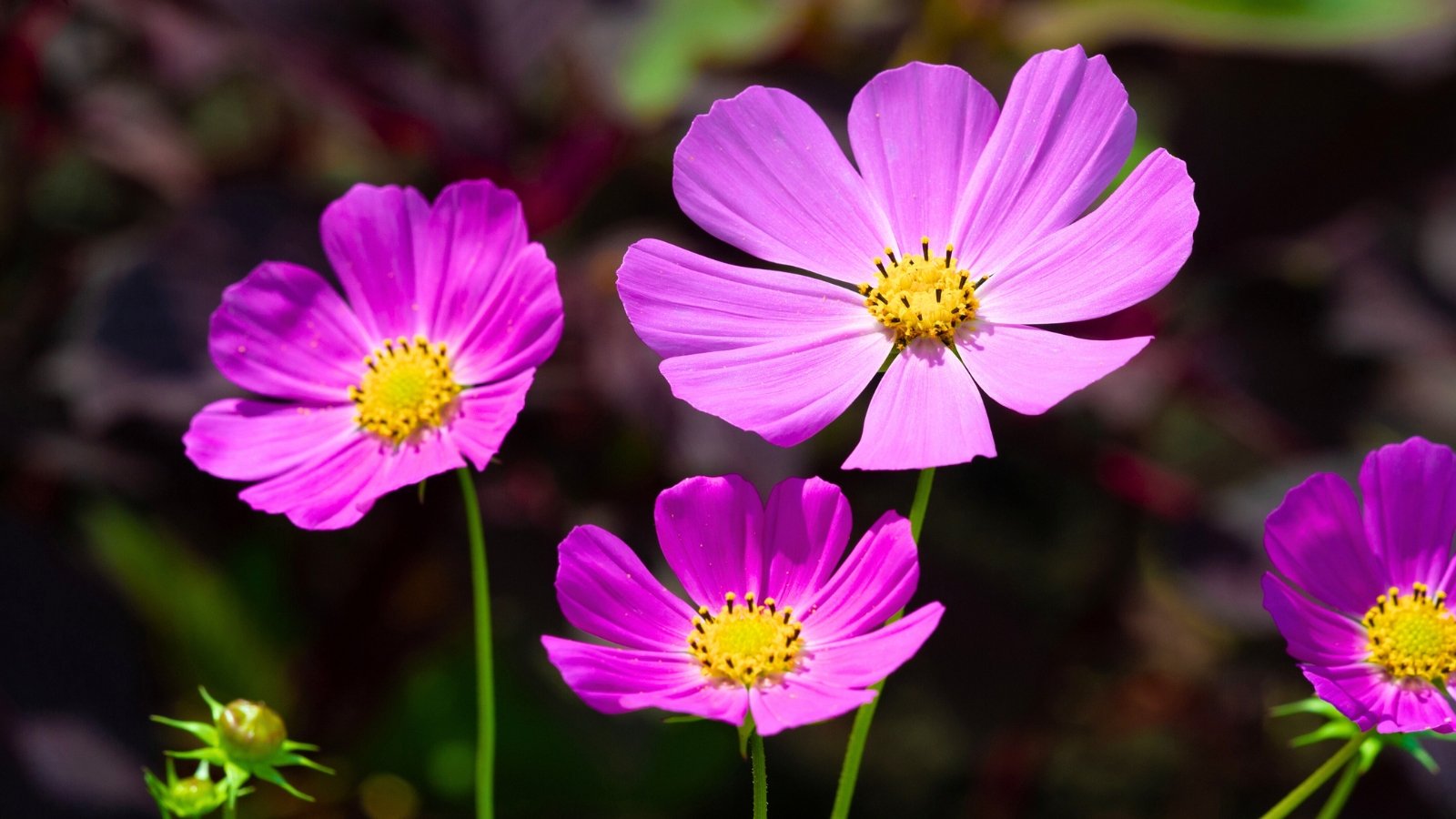 Blooms best in poor soil with little care.
Blooms best in poor soil with little care.If you have more than 60 days before the first frost to enjoy cosmos blooms, sow a round for a sweep of color. Native to the Americas, the annual wildflower brings easy vibrance in yellow, apricot, pink, red, chocolate, and many more colors. The flower forms are single or double and are a pollinator favorite.
Cosmos tolerate hot, dry garden conditions with variable soils. The low-maintenance annuals thrive with a bit of neglect. Too much water, fertilizer, and organic richness hinder their growth. When flowers finish blooming and go to seed, let them scatter and disperse for next season’s display.
Sedum
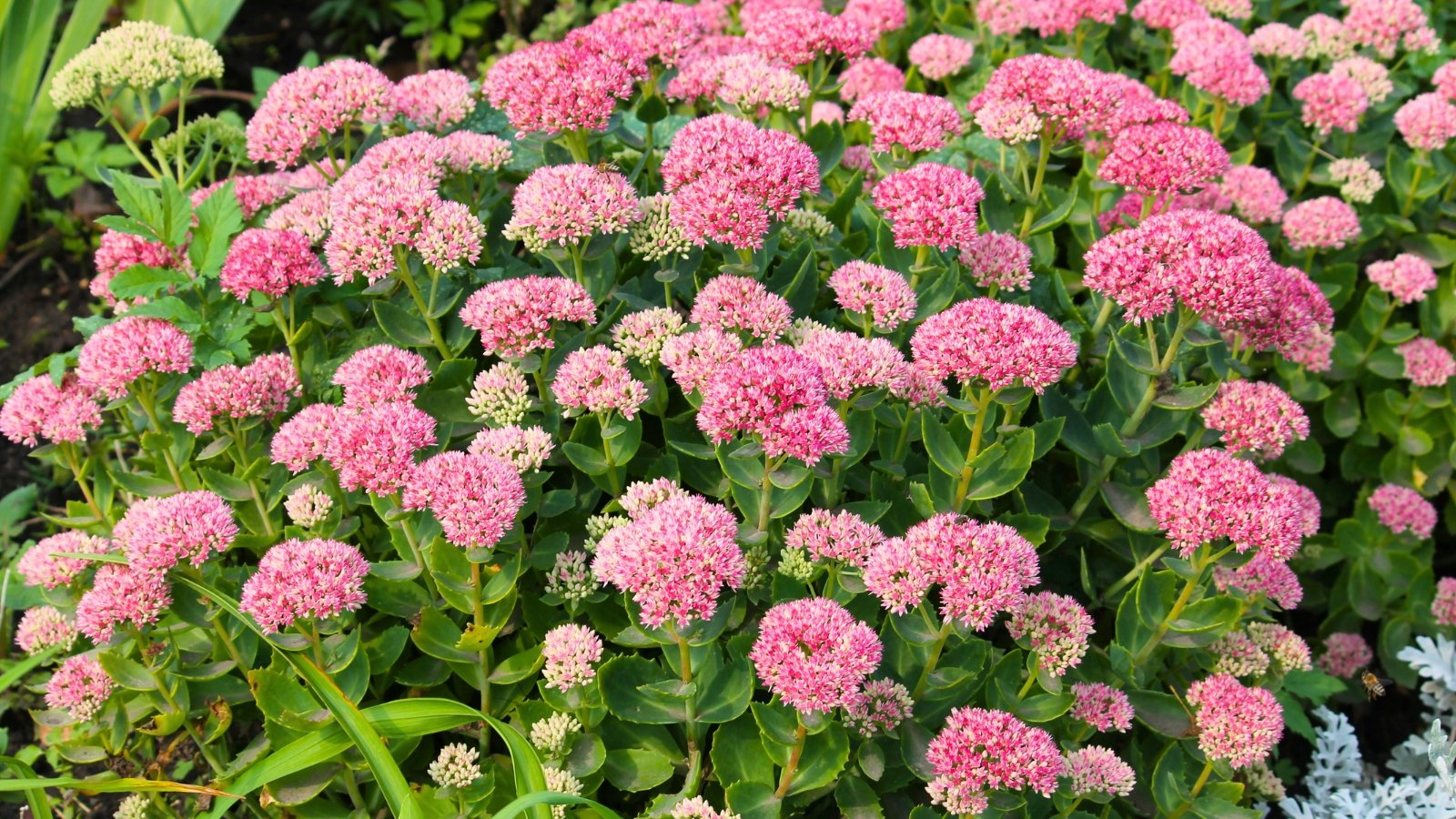 Drought-tolerant with flowers that feed pollinators and birds.
Drought-tolerant with flowers that feed pollinators and birds.Sedum, or stonecrop, is a heat-tolerant, drought-tolerant succulent with easy appeal in dry gardens. The multiseason interest through flowers and foliage occurs as a low ground cover or a tall, upright variety. The summer-to-fall flowers are a food source for beneficial insects, followed by seeds for birds. The flower heads make a beautiful autumnal floral arrangement, fresh or dried. Or, let them persist on the stem for extended interest from the seeds.
Hylotelephium ‘Autumn Fire’ is similar to the favorite ‘Autumn Joy’ with tighter branching, bright rosy blooms, and thicker leaves. Stout stems support loads of flat-topped flower clusters. Sedum ‘Yellow Brick Road’ is a fall-flowering groundcover with deep green, mounding, spreading foliage. Small yellow blooms create a carpet of color.
Calendula
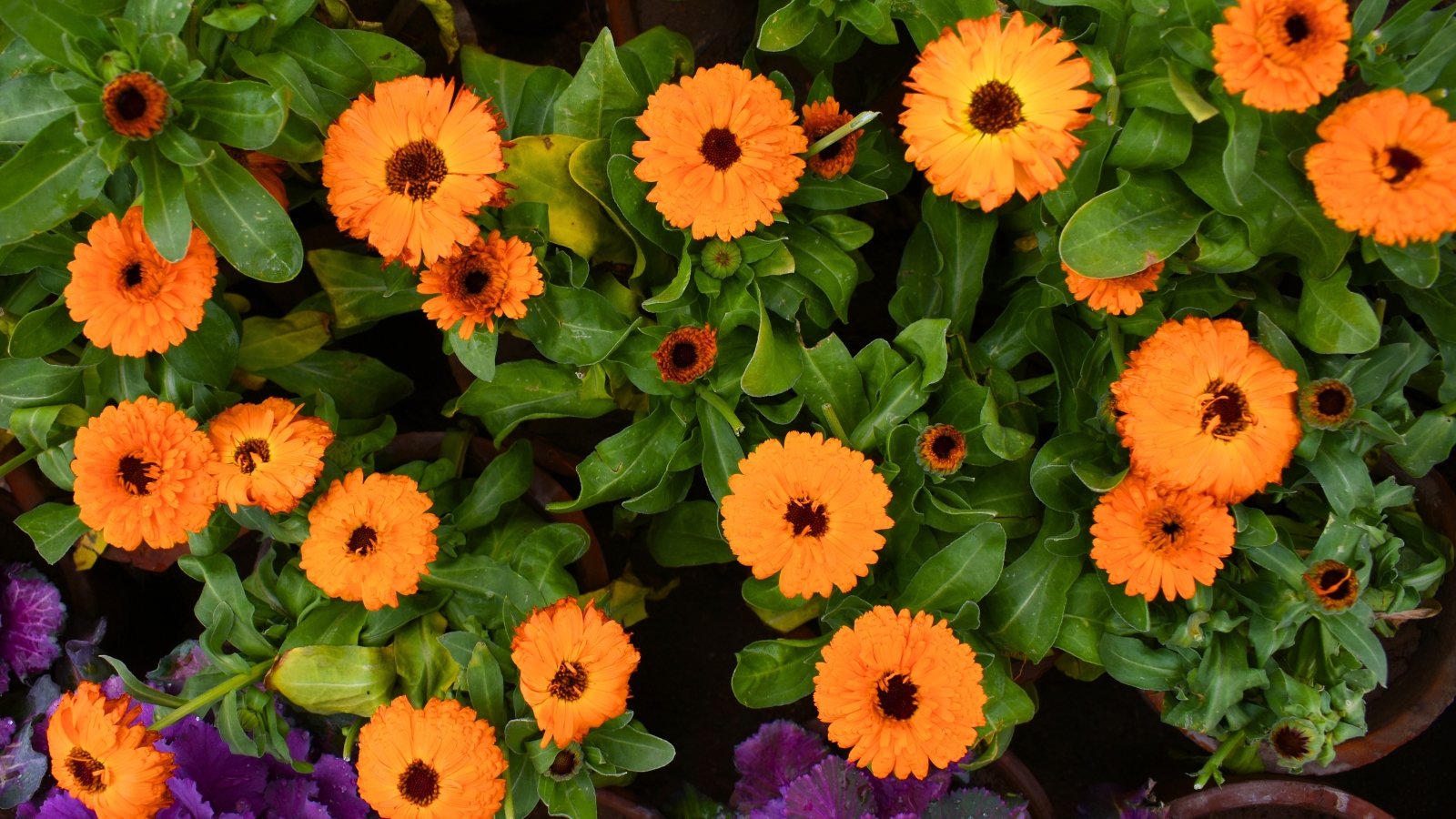 Quick to flower and tolerates chilly weather.
Quick to flower and tolerates chilly weather.Calendula is a quick-to-flower annual that prefers the cool conditions of fall. From seed, buds form in as little as 30 days. Ray petals in yellow, orange, and pink delight with single and double blooms. And, the flowers and leaves are edible and lovely as a garnish or addition to teas.
In warm climates, calendula grows best in fall, winter, and spring. In cool growing areas, the flowers appear from spring to frost, taking a break in the peak of summer heat.
Because they’re speedy, sowing a round in mid to late summer offers extended seasonal color. They tolerate chilly conditions and may self-seed for a spring bloom.
Muhly Grass
 Airy pink plumes shine in tough soils.
Airy pink plumes shine in tough soils.Ornamental grasses are a prize in the fall, when unique plumes stand out among the blades. From upright to graceful tufts, grasses go a long way in adapting to challenging conditions while adding sway and movement to the garden. Even in dry gardens, their visual interest persists into winter.
Muhly is a North American native grass with airy plumes that create a pinky-red haze above fine-bladed foliage. Wiry leaves in deep, glossy green provide a gently arching clump until the panicles burst in the fall.
‘White Cloud’ produces white plumes above an open habit and blooms after pink muhly. ‘Undaunted®’ is a ruby muhly (M. reverchonii) with deep rose plumes, densely tufted leaves, and improved cold hardiness.
Low-maintenance muhly grass is heat, humidity, and drought-tolerant. It grows in poor soils, including clay, rocky, and sandy. It’s also highly salt-tolerant.
Scarlet Flax
 Self-seeds freely for repeat red blooms.
Self-seeds freely for repeat red blooms.Scarlet flax is an annual that yields a profusion of red blooms, appealing to beneficial insects. While the seeds aren’t edible like other flax species, the quick blooms bring a flash of color. Without deadheading, ‘Scarlet’ self-seeds for recurrent color.
Direct sow flax by scattering seeds on moist soil and gently tamping for soil contact. The seeds need light exposure to germinate and don’t need soil coverage. Plant them in late summer for fall color in climates with long growing seasons. For colder climates, opt for cool-season annuals like snapdragons, violas, and ornamental kale to usher in the autumnal display.
Coreopsis
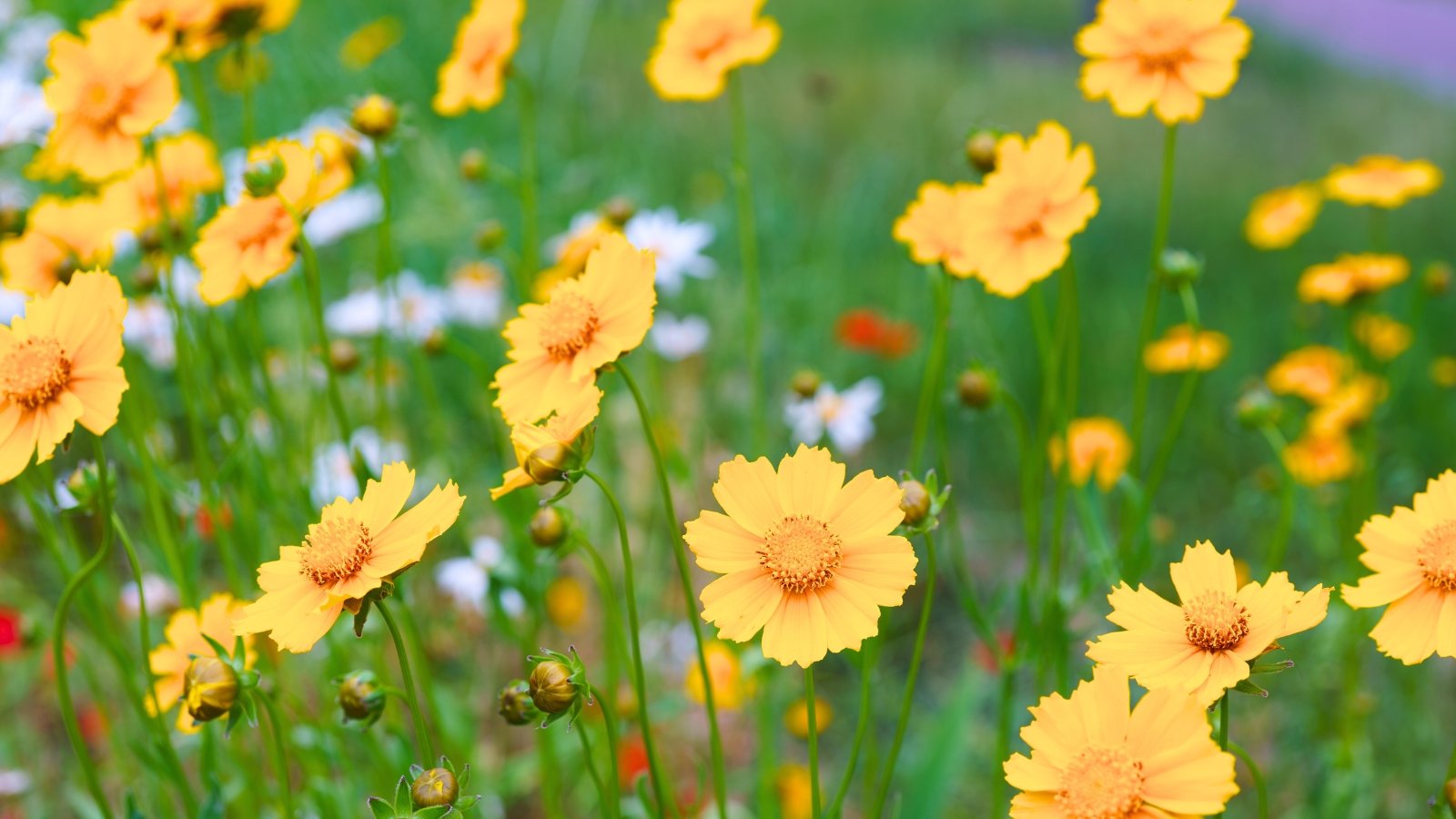 Extended bloom season and easy self-seeding.
Extended bloom season and easy self-seeding.Coreopsis is a fast-growing North American native wildflower. With an extended bloom season, it’s one of the first to show in early spring and one of the last to fade in autumn. For reviving the late-season look in dry gardens, opt for nursery starts for flowers this season. Otherwise, direct sow seeds in the fall or winter for infill in the spring.
Lance-leaved coreopsis (Coreopsis lanceolata) has signature golden ray petals and yellow centers and is drought-tolerant. Plains coreopsis (C. tinctoria) bears yellow daisy petals with deep red highlights and brown button central discs. Though considered an annual, a single plant may last two to three years.
Coreopsis is drought and heat-tolerant. It self-seeds to expand the colony in the following seasons. Pollinators appreciate the transitional food source heading into fall, and songbirds forage on the seeds into winter.
Violas and Pansies
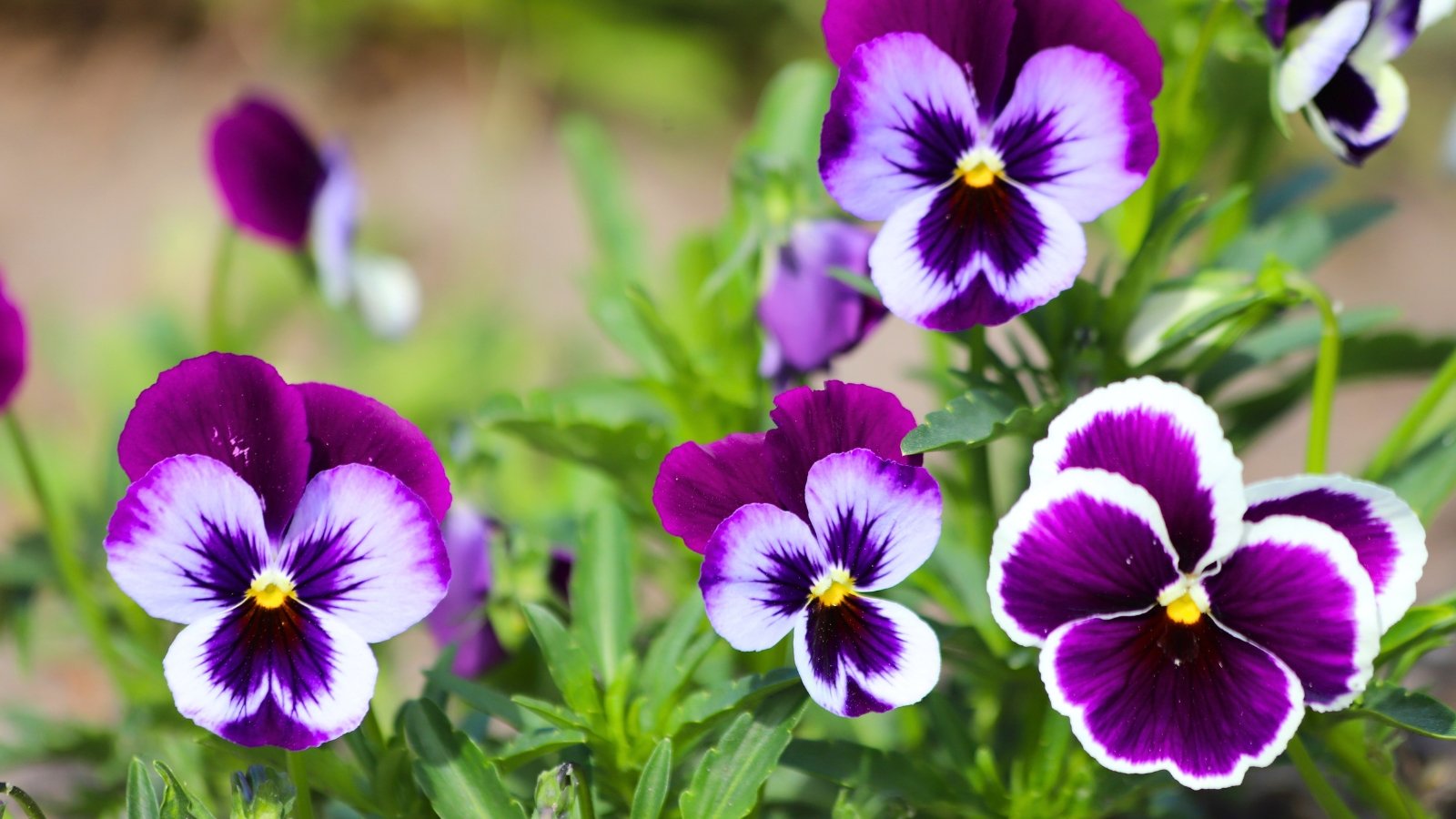 Blooms in cool weather and survives light frosts.
Blooms in cool weather and survives light frosts.Violas and pansies cheer up the annual border or container arrangement with colorful faces. The frost-tolerant annuals thrive in cool conditions, and starting them from seed now makes way for an autumnal display. In cold climates with early cool temperatures, nursery flats bring a colorful flush and are easy to tuck into planters, hanging baskets, and annual sweeps.
Pansies and violas tolerate temperatures in the 20s (around -7°C) and sometimes lower. Leaves may turn gray during cold snaps and recover as temperatures warm. Well-draining soils and consistent moisture are best for overall vigor and flowering.
The easy-to-grow annuals pair beautifully with snapdragons and leafy greens like kale and lettuce. Edible, they’re also a lovely garnish.


 5 hours ago
5
5 hours ago
5

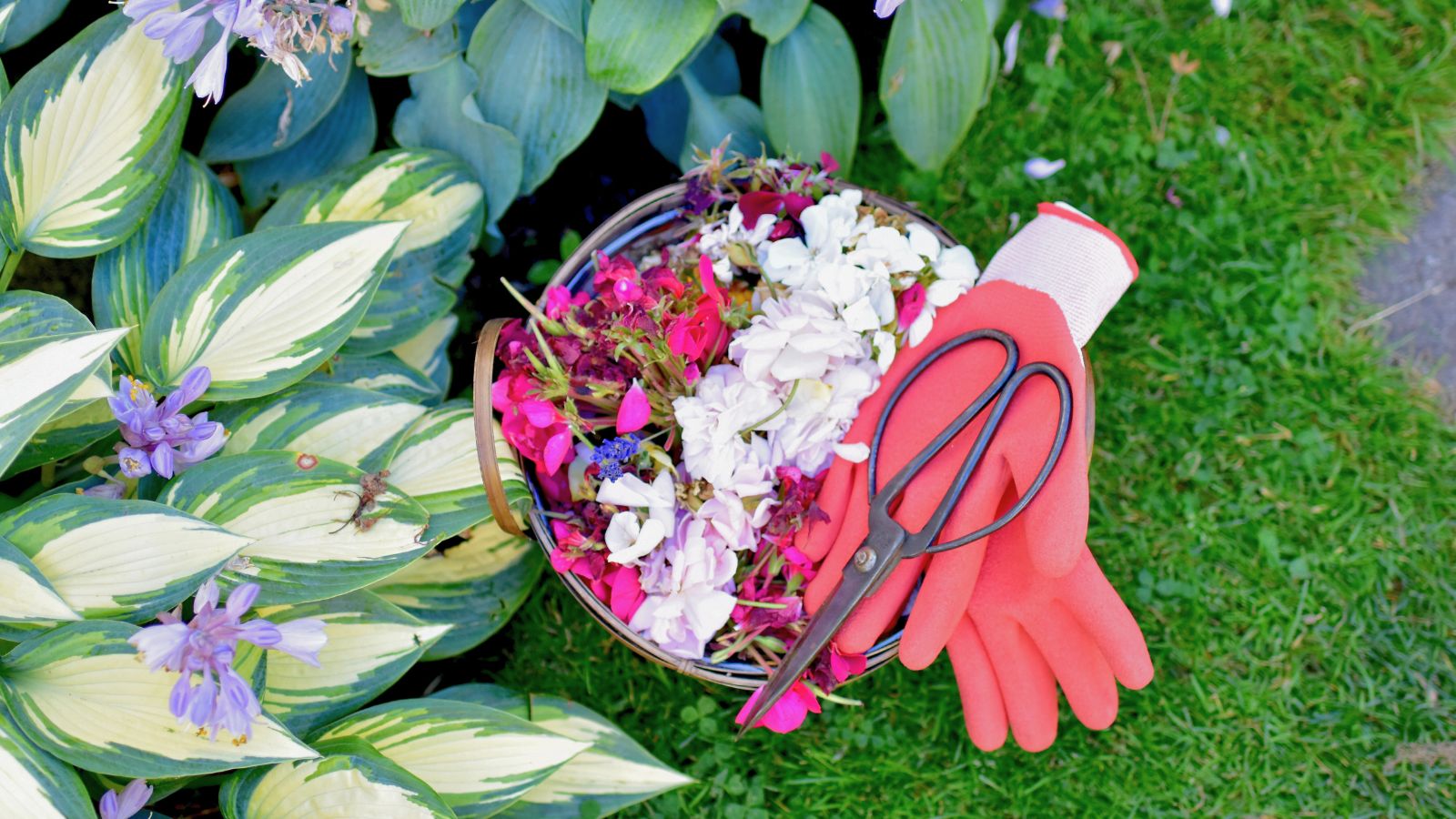



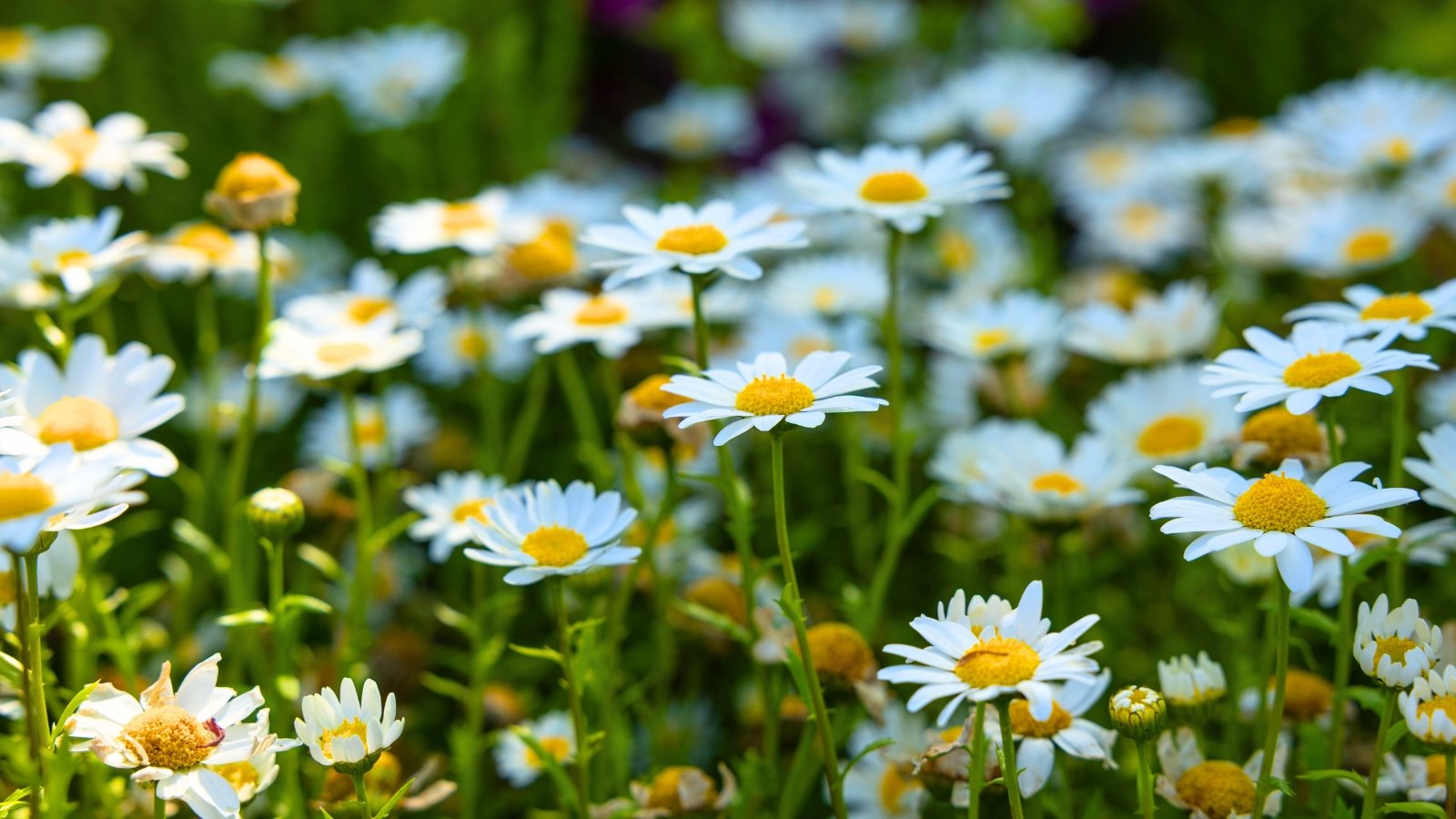















 English (US) ·
English (US) ·  French (CA) ·
French (CA) ·